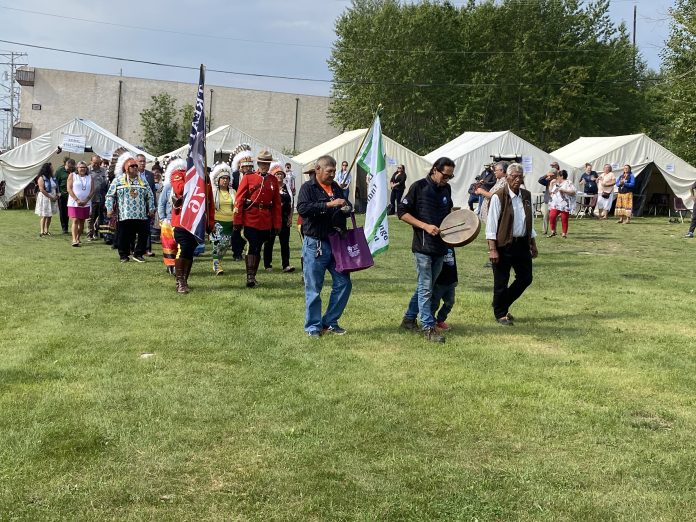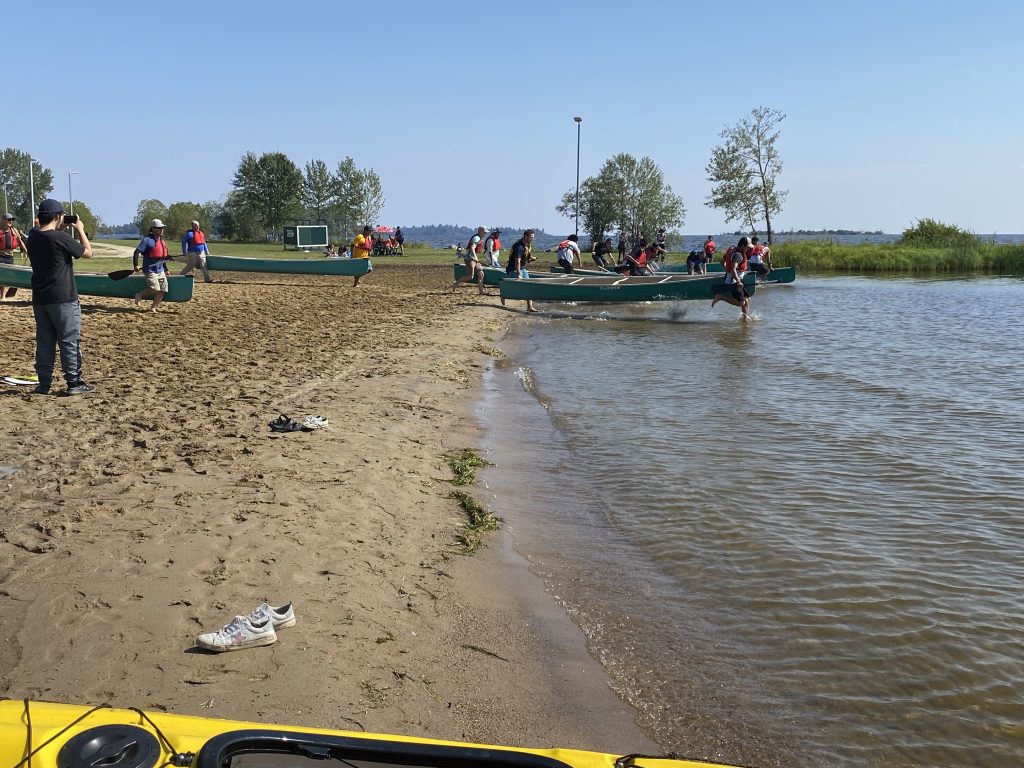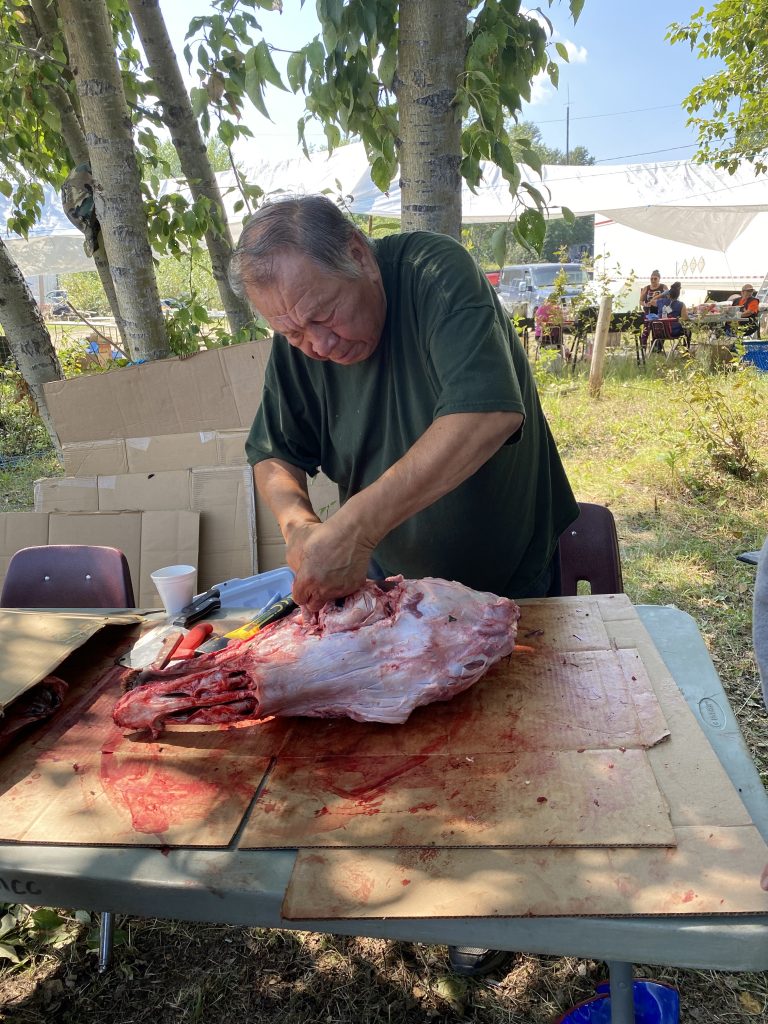
Valerie G. Barnes Connell Jordan
Northern Advocate
The Lac La Ronge Indian Band (LLRIB) hosted the Woodland Cree Gathering Aug. 23 to 26. It was the first time the usually annual Gathering was held since the pandemic.
The event began with a Grand Entry, which included the chiefs of the three First Nations which make up the Woodland Cree – Peter Ballantyne Cree Nation (PBCN); Montreal Lake Cree Nation (MLCN) and Lac La Ronge Indian Band (LLRIB).

Each day began with a Pipe Ceremony led by LLRIB Elders John Halkett and Sally Milne.
Chief Tammy Cook-Searson welcomed the guests, which included – the Chiefs of each of the First Nations; Lt. Gov. Russ Mirasty, a LLRIB member; Saskatchewan’s Treaty Commissioner, Mary Culbertson; Grand Chief Brian Hardlotte, of the Prince Albert Grand Council; Carla Beck, newly elected Opposition Leader in the Saskatchewan Legislature; Métis Nation Saskatchewan President Glen McCallum; and Doyle Vermette, MLA for Cumberland constituency.

The opening was, in some ways, a celebration of women, when it was noted that all three Chiefs are women, as is, Mary Culbertson, Saskatchewan’s Treaty Commissioner; the newly elected leader of the Opposition in Saskatchewan; and the Métis Nation-Saskatchewan Regional Director, Laura Burnouf.
The four-day gathering involved a tight schedule of activities, which included information on a the LLRIB departments, arts and crafts, healthcare – hands on healing, foot care, medicines knowledge and consultations; sample herbal tea native to the area; traditional food for each meal; and time to sit and reflect at the Sacred Fire, which was kept going day and night throughout the four days.
People could visit exhibits involving the history of the area, particularly the former Residential School, genealogy of the families in the area; a space for seniors to get out of the hot sun; and shopping for traditional items.
One-time events included: a movie under the stars; canoe races; a golf tournament; talent shows; dancing competitions; music concerts; and much more.
The three First Nations gathered to discuss mutual concerns throughout the gathering.

